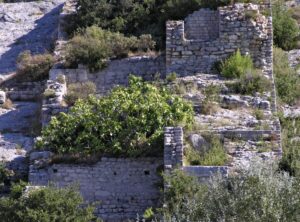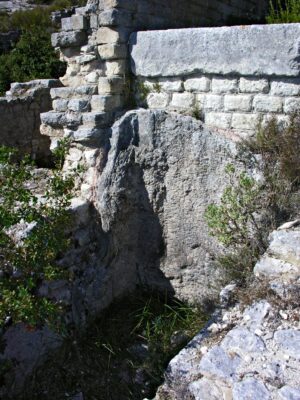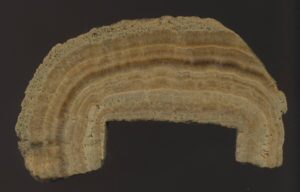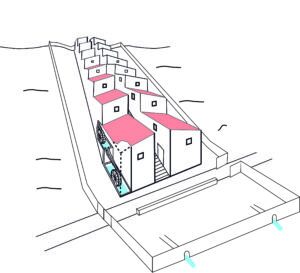
Analyzing carbonate deposits from a second century AD Roman watermill site – thought to be one of the first industrial complexes in human history – has revealed characteristics of the mill, including its nonuse for several months of the year. These findings suggest that the Barbegal mill site was not the Roman city of Arelate’s main flour supplier as hypothesized, but rather it was likely used to produce non-perishable “ship’s bread” for the many ancient ships that visited the major ports of Arles during certain times of the year. These findings shed light on the variable uses of ancient mills, as well as on their maintenance and on the destruction of the related sites, information that has otherwise been hard to decipher for these ancient formations. Over the past decades, the unearthing of Roman mill sites has offered proof of notable innovation during the Roman times, especially in the field of hydraulics. A key example of such a watermill is located at Barbegal, in southern France. However, since its discovery in 1937, little has been revealed about its unique history. Gül Sürmelihindi and colleagues sought to discern more about the mill’s use by analyzing 142 carbonate deposits from the complex. Formed on the now decayed wooden parts of the watermill that had been in contact with karst springs, these carbonates can preserve information of the environment of the complex. The fragment samples can be split into two groups: large carbonate slabs that formed in water channels that turned the wheel (millrun flumes) and deposits that had formed on the wooden part of the wheel. Stable isotope analyses of oxygen and carbon showed a distinct, cyclical pattern in the deposits, suggesting interruptions of the water flow during the late summer and autumn, a pattern of activity in accordance with Roman shipping activities, the authors say. Roman shipping usually halted in late autumn, meaning flour production to support shipping could have subsided then, too. Thus, they propose that the mill’s main use was not for widely consumed flour but specifically to produce non-perishable ship’s bread.
________________________________

East side of the Barbegal mill complex looking north. The buildings on the left are the millbuildings where the grain was milled, the higher walls and basins on the right are the waterbasins of the mill complex that housed the water wheels. Robert Fabre, Saint Etienne du Grès, France
________________________________

Overview of the Barbegal mill complex in 2018, seen from below, looking north. The two rows of buildings on the rocky slope are the actual mill buildings and mill basins, while the gap visible at the top is the rock cut through which the aqueduct water entered the mill complex. Robert Fabre, Saint Etienne du Grès, France
________________________________

Mill basin of the Barbegal mill with carbonate deposits.
Robert Fabre, Saint Etienne du Grès, France
________________________________

Cross-section of a layered carbonate deposit from the Barbegal mill complex. This carbonate formed layer-after-layer on a square piece of wood of the mill wheel, the impression of which can be seen below. The wood decayed, leaving the cast as a record of the mill’s history. Cees Passchier, Mainz, Germany
________________________________

Drawing of the Barbegal mill complex as it may have appeared in the 2nd century AD. Two rows of eight mill houses on each side contained the waterwheels and machinery (16 in total). One corner is shown opened to illustrate the position of the waterwheels and gutters. Cees Passchier, Mainz, Germany
________________________________
Article Source: A Science Advances news release. Science Advances is published by AAAS, the nonprofit science society.


